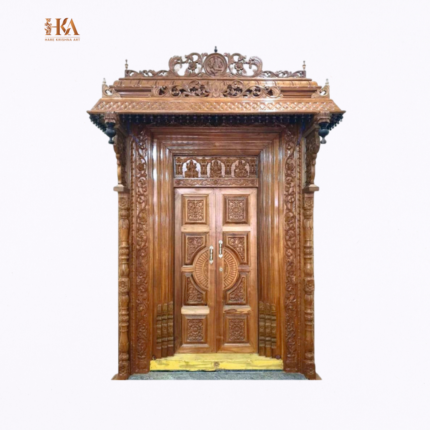Wood-carved temple doors offer a range of benefits, both practical and symbolic, which contribute to the spiritual and aesthetic aspects of a temple. Here are several benefits of wood-carved temple doors:
- Aesthetic Beauty: Wood carving adds intricate and exquisite detailing to the temple doors, enhancing the overall beauty and visual appeal of the temple’s entrance.
- Symbolism: The carving often incorporates religious and spiritual symbolism, which can help convey the temple’s message and purpose to visitors and devotees.
- Spiritual Significance: The act of carving the temple door can be a devotional practice in itself, with artisans dedicating their work to the divine, infusing spiritual energy into the door.
- Cultural Heritage: Many temples have doors that reflect the local or regional art and carving traditions, preserving cultural heritage and artistic techniques.
- Customization: Wood carving allows for customization, enabling temple doors to reflect the specific deity or spiritual tradition honored in the temple.
- Sacred Threshold: The temple door serves as a threshold between the material and spiritual worlds, signifying the transition from the mundane to the sacred.
- Architectural Significance: In addition to their aesthetic value, carved doors can have architectural significance, setting the temple apart as a place of worship.
- Durability: High-quality wood and carving techniques can make temple doors durable, with the potential to last for generations.
- Craftsmanship: Carving temple doors is often a labor-intensive craft that supports local artisans and their livelihoods.
- Inviting Atmosphere: Beautifully carved doors can create an inviting and serene atmosphere that encourages devotion and contemplation.
- Cultural and Spiritual Identity: The style and design of the temple doors can represent the temple’s cultural and spiritual identity, helping devotees connect with their traditions.
- Focal Point: Elaborate wood-carved doors can serve as a focal point, drawing the attention of visitors and guiding them toward the main deity or altar.
In summary, wood-carved temple doors are not just functional entryways; they hold deep spiritual, cultural, and aesthetic significance, enriching the temple’s atmosphere and conveying its essence to all who enter.




